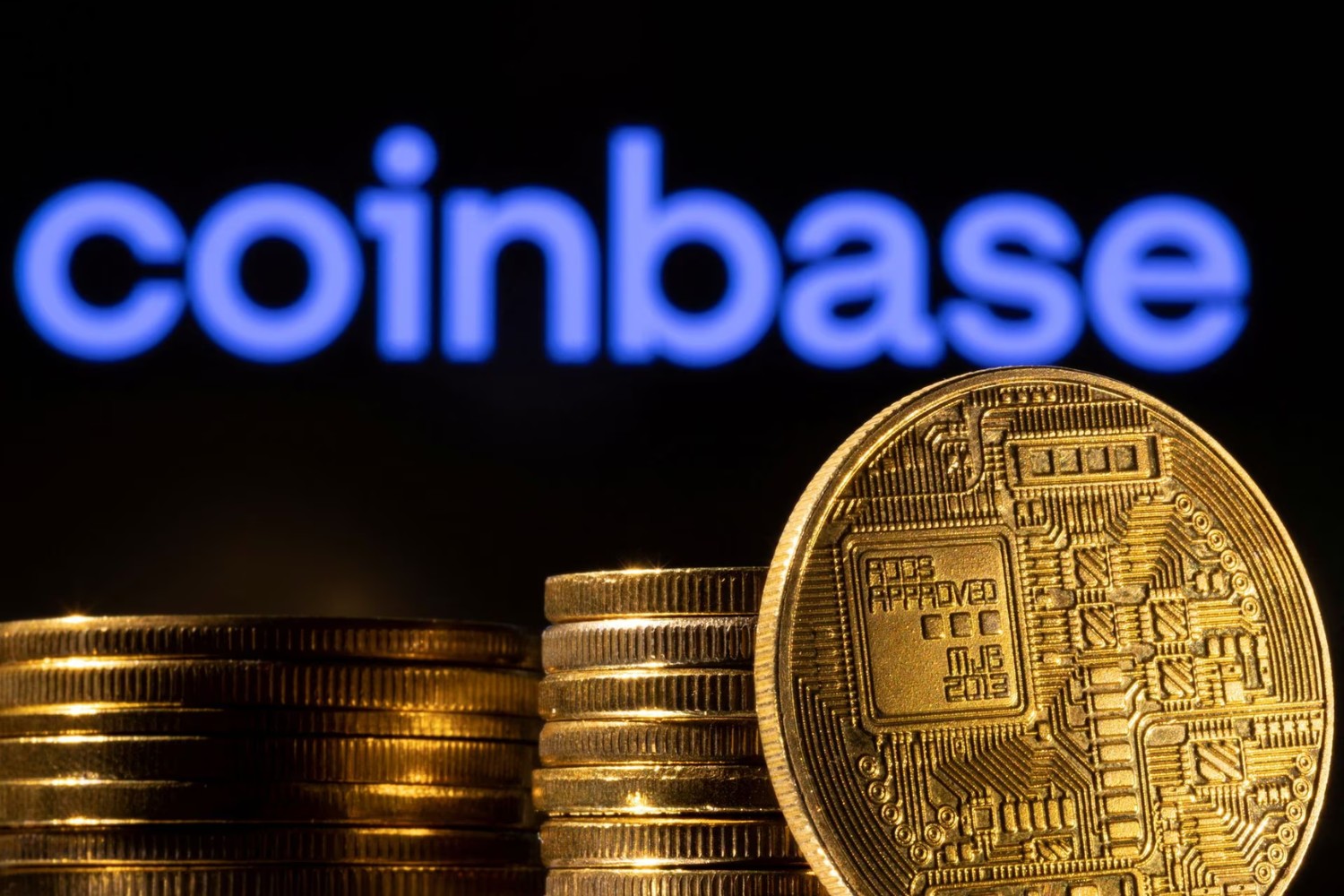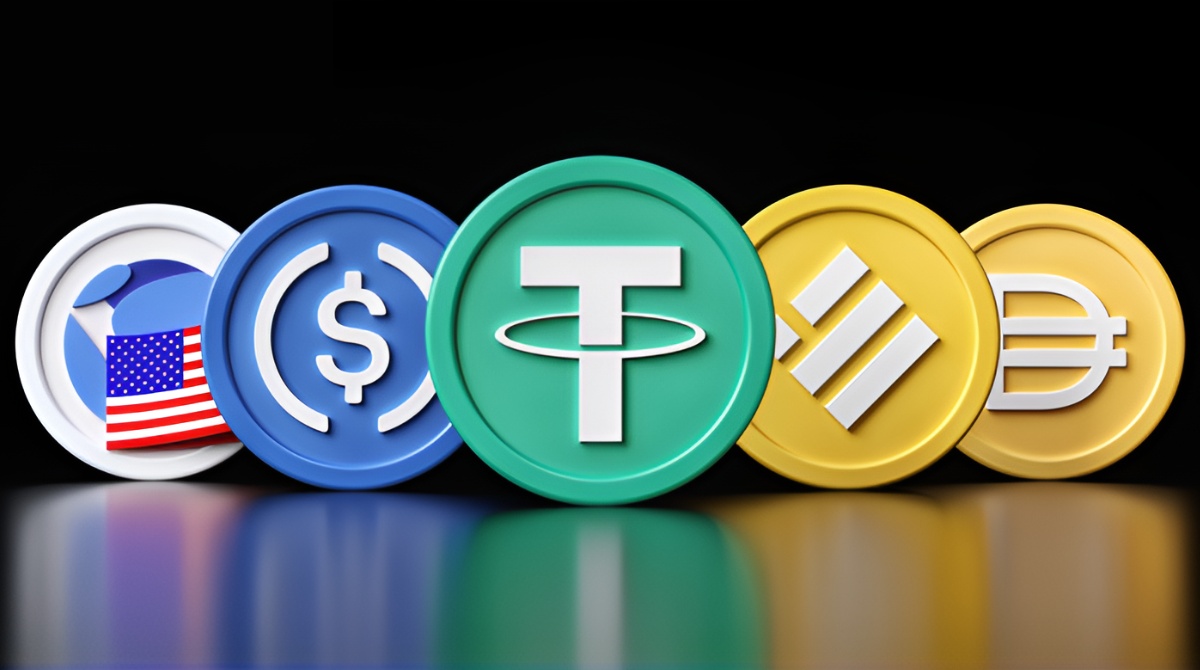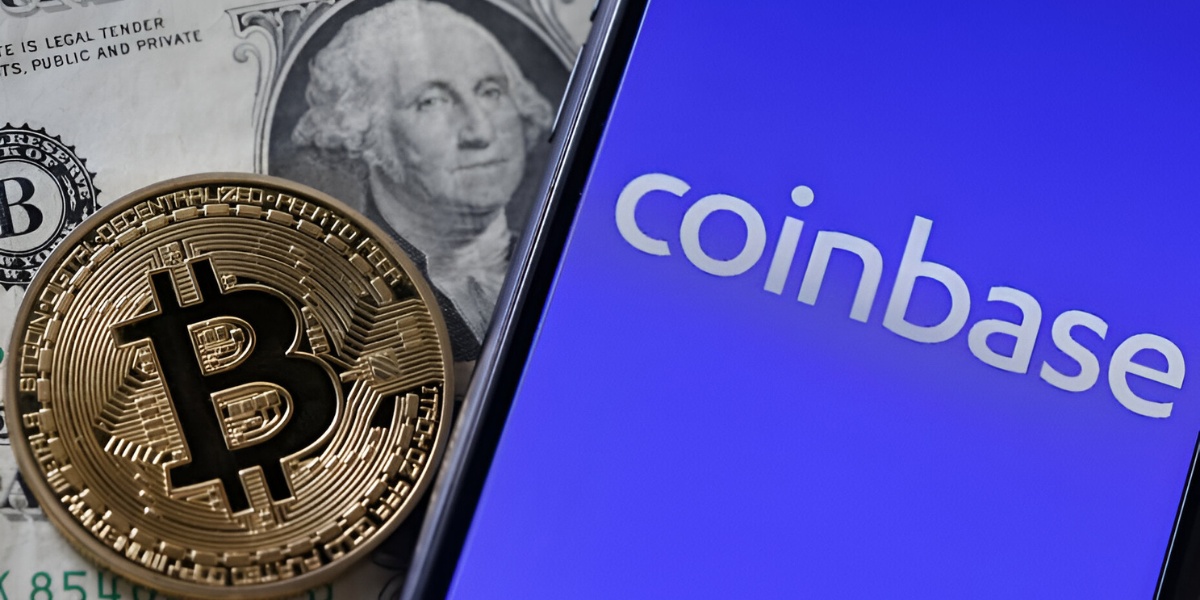What Is a Stablecoin?
A stablecoin is a type of cryptocurrency that is designed to maintain a stable value, usually pegged to a specific asset or a basket of assets. Unlike traditional cryptocurrencies like Bitcoin and Ethereum, which experience significant price fluctuations, stablecoins aim to provide a more reliable and less volatile form of digital currency.
The value stability of stablecoins comes from their underlying mechanisms. Most stablecoins use one of the following approaches:
- Collateralized Stablecoins: These stablecoins are backed by reserve assets, such as fiat currencies, commodities, or other cryptocurrencies. The value of the stablecoin is directly linked to the value of the underlying reserves.
- Algorithmic Stablecoins: These stablecoins do not rely on collateral but use algorithms and smart contracts to maintain price stability. The algorithm regulates the supply and demand of the stablecoin, adjusting its monetary policy to keep the price stable.
- Hybrid Stablecoins: These stablecoins combine elements of both collateralized and algorithmic approaches, aiming to strike a balance between stability and scalability.
Stablecoins offer distinct advantages compared to traditional cryptocurrencies because of their stable value. They can provide a viable solution for individuals and businesses that require stability in their transactions, without having to resort to fiat currencies or traditional banking systems.
The practical applications of stablecoins are vast. They can be used for online purchases, remittances, decentralized finance (DeFi) protocols, lending and borrowing platforms, cross-border transactions, and more.
While stablecoins have gained popularity in recent years, it’s important to note that they are not without risks and challenges. Issues such as regulatory scrutiny, potential centralization, and market manipulation need to be carefully addressed and monitored to ensure the long-term viability and integrity of stablecoins.
Overall, stablecoins have emerged as a significant development in the cryptocurrency space, offering stability and reliability in an otherwise volatile market. As the demand for decentralized and efficient financial solutions continues to grow, stablecoins are likely to play a crucial role in shaping the future of digital transactions.
Stablecoin vs. Cryptocurrency: Understanding the Difference
While stablecoins are a type of cryptocurrency, there are significant differences between them and other cryptocurrencies like Bitcoin or Ethereum. Understanding these differences is crucial to grasp the unique benefits that stablecoins bring to the table.
One of the primary distinctions is the volatility factor. Cryptocurrencies like Bitcoin are known for their extreme price fluctuations, which can be both a blessing and a curse for investors. The value of Bitcoin can soar or plummet within a short period, making it a high-risk asset. On the other hand, stablecoins are designed to maintain a stable value, reducing the impact of price volatility. This predictability makes stablecoins more suitable for everyday transactions and financial activities.
Another key difference lies in the underlying mechanisms supporting their value. Cryptocurrencies are often decentralized and operate on blockchain technology, relying on factors like mining, scarcity, and market demand to determine their value. In contrast, stablecoins have specific mechanisms in place to ensure stability. They are typically pegged to a fiat currency, such as the US dollar, or a basket of assets, creating a direct link between their value and a recognized benchmark.
The purpose of cryptocurrencies and stablecoins also differs. While cryptocurrencies are often seen as speculative investments or mediums of exchange, stablecoins are primarily used as a stable store of value and a reliable means of exchange. Stablecoins offer the best of both worlds, combining the efficiency and security of blockchain technology with stable value characteristics.
Additionally, the adoption of stablecoins is more likely to gain traction in traditional financial sectors. In contrast, cryptocurrencies face more regulatory challenges and are often considered as separate entities from traditional financial systems. Stablecoins, being pegged to established currencies, can bridge the gap between the digital and traditional financial worlds. This feature not only enhances their usability but also attracts a wider range of users.
In summary, stablecoins and cryptocurrencies have distinct differences. Stablecoins strive to provide stability and reliability, making them more suitable for everyday transactions. They rely on specific mechanisms to maintain a stable value, often pegging themselves to recognized benchmarks. On the other hand, cryptocurrencies like Bitcoin are known for their volatility and decentralized nature. Understanding these differences helps investors and users leverage the benefits offered by stablecoins and cryptocurrencies in their respective use cases.
Benefits of Stablecoins
Stablecoins offer several key benefits that make them a valuable addition to the world of digital currencies. Let’s explore some of the advantages that stablecoins bring to the table:
- Stability and Reliability: As the name suggests, stablecoins provide a stable value, reducing the volatility associated with traditional cryptocurrencies. This stability makes them more predictable and reliable as a medium of exchange and a store of value.
- Reducing Volatility: The reduced volatility of stablecoins makes them a preferred choice for individuals and businesses conducting transactions. By minimizing price fluctuations, stablecoins provide a level of certainty that is crucial in various industries.
- Facilitating Instant Transactions: Stablecoins, being digital assets, can be transferred quickly and easily, often through blockchain technology. This speed and efficiency make them ideal for instant transfers and settlements, eliminating the need for intermediaries and reducing transaction times.
- Lower Transaction Fees: Traditional payment systems often come with hefty transaction fees, especially for cross-border transactions. Stablecoins offer a more cost-effective alternative, with lower transaction fees compared to traditional methods, making them attractive for global transactions.
- Promoting Financial Inclusion: Stablecoins have the potential to enhance financial inclusion by providing access to digital financial services to individuals who may not have access to traditional banking systems. This can empower the unbanked and underbanked populations around the world.
- Providing Access to Global Markets: Stablecoins eliminate the need for complex currency conversions and intermediaries in cross-border transactions. This accessibility opens up new opportunities for individuals and businesses to participate in global markets seamlessly.
- Preserving Privacy and Security: Cryptocurrencies, including stablecoins, offer enhanced privacy compared to traditional financial systems. The use of pseudonymous transactions and secure blockchain technology ensures a higher level of privacy and security for users.
These benefits highlight the potential of stablecoins to revolutionize various sectors, ranging from finance and e-commerce to remittances and decentralized finance (DeFi) applications. As the demand for digital currencies grows, stablecoins offer a practical and reliable solution that combines the advantages of cryptocurrencies with the stability of traditional fiat currencies.
Stability and Reliability
One of the primary benefits of stablecoins is their stability and reliability. Unlike traditional cryptocurrencies that are known for their price volatility, stablecoins aim to maintain a stable value. This stability makes them a more predictable and dependable form of digital currency for everyday transactions and financial activities.
Stablecoins achieve stability through various mechanisms, depending on their design. Some stablecoins are collateralized, meaning they are backed by reserve assets like fiat currencies, commodities, or even other cryptocurrencies. The value of these stablecoins is directly linked to the value of the underlying reserves, ensuring stability.
Other stablecoins, known as algorithmic stablecoins, do not rely on collateral. Instead, they use complex algorithms and smart contracts to regulate their supply and demand. These algorithms adjust the monetary policy of the stablecoin to maintain a stable value, essentially pegging it to a specific benchmark.
The stability and reliability of stablecoins make them an attractive alternative to traditional cryptocurrencies for individuals, businesses, and financial institutions. They provide a more secure medium of exchange, as the value of stablecoins is less susceptible to sudden price fluctuations.
For businesses, stablecoins offer a stable platform for accepting digital payments, reducing the risks associated with accepting traditional cryptocurrencies. Merchants can confidently transact in stablecoins, knowing that the value of their sales will not be impacted by drastic price changes.
Stablecoins are also useful for individuals who want to hedge against the volatility of traditional cryptocurrencies. By holding stablecoins, individuals can enjoy the benefits of digital currencies while minimizing their exposure to price fluctuations.
Additionally, stablecoins can serve as a stable store of value in regions where the local fiat currency is subject to hyperinflation or other economic instabilities. People in such areas can hold stablecoins to preserve their wealth and avoid the risks associated with their local currency.
In summary, stability and reliability are key advantages of stablecoins. By minimizing price volatility, stablecoins provide a more predictable and dependable form of digital currency for everyday transactions and financial activities. Whether for businesses or individuals, stablecoins offer a stable and secure medium of exchange in an otherwise volatile cryptocurrency market.
Reducing Volatility
Another significant benefit of stablecoins is their ability to reduce volatility. Traditional cryptocurrencies like Bitcoin and Ethereum are characterized by their price volatility, which can fluctuate dramatically within a short period. This volatility can make it challenging to use them as reliable mediums of exchange or stores of value.
Stablecoins, on the other hand, address this issue by aiming to maintain a stable value. Their prices are often pegged to a specific asset or a basket of assets, which helps stabilize their value and reduce the impact of price fluctuations. This predictability makes stablecoins more suitable for various financial transactions.
The reduction in volatility provided by stablecoins has several practical advantages. First and foremost, it enhances the usability of stablecoins for everyday transactions. Individuals can confidently use stablecoins to buy goods and services without worrying about the value drastically changing between the time of purchase and the time of settlement.
For businesses, stablecoins offer a more stable platform for accepting payments. By avoiding the risk of sudden price declines, businesses can conduct transactions with peace of mind and focus on their core activities, rather than continuously monitoring the fluctuating value of traditional cryptocurrencies.
Reduced volatility also benefits individuals and businesses engaged in cross-border transactions. International payments often involve multiple currencies and exchange rate conversions, which can add complexity and uncertainty. Stablecoins provide a stable value across borders, eliminating the need for constant currency conversions and reducing the risks associated with fluctuating exchange rates.
Moreover, stablecoins with reduced volatility enable individuals to mitigate risk when holding digital assets. Crypto investors who wish to avoid the rollercoaster-like price swings of traditional cryptocurrencies can allocate a portion of their portfolio to stablecoins. This strategy allows investors to reduce their exposure to volatility while still participating in the benefits of the digital asset space.
In summary, stablecoins’ ability to reduce volatility brings numerous advantages. By maintaining a stable value, stablecoins offer a more predictable and dependable form of digital currency for everyday transactions, cross-border payments, and investment purposes. Their stable nature makes stablecoins a practical alternative to the volatile price swings commonly associated with traditional cryptocurrencies.
Facilitating Instant Transactions
Stablecoins play a vital role in facilitating instant transactions, providing a seamless and efficient medium of exchange. Unlike traditional banking systems that often involve multiple intermediaries and lengthy settlement processes, stablecoins enable instant transfers and settlements using blockchain technology.
Due to their digital nature, stablecoins can be transferred quickly and easily. Transactions can be completed within seconds or minutes, depending on the specific blockchain network involved. This speed and efficiency significantly reduce the time required for financial transactions, making stablecoins an attractive option for individuals and businesses.
Furthermore, the use of blockchain technology adds an extra layer of security and transparency to stablecoin transactions. Each transaction is recorded on the blockchain, creating an immutable and auditable ledger. This transparency reduces the risk of fraud and increases trust among participants in the transaction process.
Stablecoins’ ability to facilitate instant transactions has several practical implications. For cross-border payments, stablecoins eliminate the need for traditional banking systems and their associated delays. Individuals and businesses can send and receive payments internationally without the typical time-consuming processes involved in traditional transfers.
The instant transaction feature of stablecoins is particularly beneficial for remittance services. Sending money across borders can be costly and time-consuming, especially for individuals relying on traditional remittance channels. Stablecoins provide a faster and more cost-effective alternative, enabling near-instant transfers at a fraction of the fees associated with traditional remittance services.
Additionally, stablecoins play a crucial role in decentralized finance (DeFi) applications. DeFi platforms, which operate on smart contracts, leverage stablecoins to facilitate lending, borrowing, and other financial activities. The instant transaction capability of stablecoins helps DeFi platforms execute transactions in real-time, allowing users to access funds and participate in DeFi protocols without delays.
In summary, stablecoins’ ability to facilitate instant transactions offers significant advantages in terms of speed, efficiency, and accessibility. These digital assets provide a seamless payment experience, reducing the need for intermediaries and streamlining cross-border payments. Additionally, stablecoins play a fundamental role in the development of DeFi applications by enabling real-time transactions and enhancing the efficiency of decentralized financial services.
Lower Transaction Fees
One of the major advantages of stablecoins is their ability to offer lower transaction fees compared to traditional payment systems. Traditional financial transactions often involve intermediaries such as banks, which charge significant fees for processing payments. In contrast, stablecoins leverage blockchain technology to minimize transaction costs, making them a cost-effective option for individuals and businesses.
Stablecoins enable peer-to-peer transactions without the need for intermediaries, thereby reducing the associated fees. Blockchain technology allows for direct transfers between parties, eliminating the middlemen and their corresponding charges. This direct transfer feature of stablecoins makes them appealing for both small and large transactions, as the transaction fees remain low regardless of the transaction amount.
Lower transaction fees offered by stablecoins are especially beneficial for international payments. Traditional banking systems often impose hefty fees and additional charges for cross-border transactions. These fees can add up, making international payments expensive and inconvenient for individuals and businesses. Stablecoins provide a more cost-effective alternative, enabling swift and affordable cross-border transactions.
Moreover, stablecoins can reduce or eliminate currency conversion fees for international transactions. With stablecoins, individuals and businesses can transact in a single currency without the need for tedious conversions between different fiat currencies. This eliminates the fees associated with currency conversions and saves time for both the sender and the recipient.
The lower transaction fees offered by stablecoins contribute to the democratization of financial services. By reducing transaction costs, stablecoins make it more accessible for individuals with limited financial resources to participate in the digital economy. This feature is particularly significant in regions where traditional banking services are scarce or expensive.
Additionally, stablecoins can support microtransactions, which are often not feasible using traditional payment systems due to high transaction fees. Microtransactions involve small amounts of money, and their affordability is crucial in various industries such as gaming, content creation, and micropayments. Stablecoins provide a cost-effective solution for microtransactions, enabling seamless and inexpensive transactions for these use cases.
In summary, stablecoins offer lower transaction fees compared to traditional payment systems, making them a cost-effective option for individuals and businesses. The elimination of intermediaries, reduced cross-border transaction costs, and the ability to support microtransactions contribute to the affordability and accessibility of stablecoin transactions.
Promoting Financial Inclusion
One of the significant benefits of stablecoins is their potential to promote financial inclusion. As digital currencies, stablecoins have the power to provide access to financial services for individuals who may otherwise be excluded from traditional banking systems.
Many people around the world do not have access to basic banking services, either due to geographical barriers, high costs, or lack of identification documentation. This unbanked or underbanked population often faces difficulties in conducting everyday financial transactions, saving money, and accessing credit.
Stablecoins offer a solution to this problem. By leveraging blockchain technology, stablecoins offer a digital and decentralized alternative to traditional banking. People who have access to a smartphone and an internet connection can participate in the stablecoin ecosystem, regardless of their location or socioeconomic status.
For the unbanked and underbanked populations, stablecoins provide a platform to store and transfer value securely. Instead of relying on physical cash, which can be vulnerable to theft or loss, stablecoins offer a digital means of preserving wealth. This feature is particularly valuable in regions with unstable or inflationary local currencies.
Furthermore, stablecoins enable individuals to access digital financial services such as savings, lending, and insurance. By participating in decentralized finance (DeFi) protocols, individuals can earn interest on their stablecoin holdings, access loans, and obtain insurance coverage. These services were traditionally accessible only to individuals with formal banking relationships.
In addition, stablecoins allow for frictionless remittances, which can greatly benefit migrant workers and their families. Sending money across borders through traditional remittance channels often involves high fees and delays. Stablecoins provide a more cost-effective and efficient alternative, enabling near-instant transfers with lower transaction costs.
Overall, stablecoins have the potential to bridge the gap between the unbanked and the formal financial system. By providing secure and accessible digital financial services, stablecoins empower individuals who have been excluded from traditional banking services. Promoting financial inclusion through stablecoins can contribute to poverty reduction, economic empowerment, and the overall well-being of underserved populations.
Providing Access to Global Markets
Stablecoins play a pivotal role in providing individuals and businesses with access to global markets. By leveraging blockchain technology and eliminating the need for intermediaries in cross-border transactions, stablecoins offer a seamless and cost-effective solution for participating in the global economy.
Traditional financial systems often impose barriers and complexities when it comes to engaging in cross-border transactions. These barriers include high fees, long settlement times, and currency exchange challenges. Stablecoins address these issues by enabling borderless transactions and reducing the costs associated with cross-border payments.
With stablecoins, individuals and businesses can transact globally without the need for multiple conversions between fiat currencies and the associated fees. Stablecoins, often pegged to a specific fiat currency or a basket of assets, provide a stable and easily transferable value across borders. This eliminates the need for traditional banking systems and enables direct peer-to-peer transactions on a global scale.
The accessibility to global markets offered by stablecoins opens up new opportunities for businesses, particularly small and medium enterprises (SMEs). SMEs often face challenges when expanding into international markets due to limited access to banking services, high transaction fees, and currency constraints. Stablecoins provide a level playing field by reducing these barriers, allowing SMEs to engage in cross-border trade and access a broader customer base.
Moreover, stablecoins play a critical role in decentralized finance (DeFi) protocols, which are built on blockchain technology. DeFi platforms enable users to participate in various financial activities such as lending, borrowing, and liquidity provision without the need for traditional financial intermediaries. Stablecoins play a central role in these platforms, providing a stable medium of exchange and facilitating the efficient movement of assets between users.
Stablecoins also enable individuals in countries with restricted access to global markets to invest in assets and diversify their portfolios. By using stablecoins as a bridge currency, individuals can overcome geographical limitations and gain exposure to a broader range of investment opportunities beyond their borders.
In summary, stablecoins provide individuals and businesses with access to global markets by facilitating cross-border transactions without the need for intermediaries. The elimination of barriers such as high fees, complex settlement processes, and currency exchange challenges enables seamless participation in the global economy. Stablecoins empower businesses, particularly SMEs, to expand into international markets, while also providing individuals with opportunities to diversify their investment portfolios and access decentralized financial services.
Preserving Privacy and Security
Preserving privacy and security are essential aspects of stablecoins that make them attractive to users who value their personal data and financial information. While traditional banking systems often require extensive disclosure of personal information, stablecoins offer a more secure and private means of conducting financial transactions.
Stablecoins leverage blockchain technology, which provides enhanced security compared to traditional financial systems. Transactions conducted using stablecoins are recorded on a decentralized and immutable ledger, making it difficult for unauthorized parties to tamper with or manipulate the transaction history.
One of the key aspects of stablecoins is the pseudonymous nature of transactions. While the transaction details are recorded on the blockchain, the identities of the parties involved are often obscured or represented by unique cryptographic addresses. This privacy feature enhances the security of the individuals involved, reducing the risk of identity theft or fraudulent activities.
Furthermore, stablecoins offer users the ability to control their personal financial data. Traditional financial systems often require individuals to share their personal information with various intermediaries, potentially leading to data breaches or misuse of personal information. With stablecoins, individuals have more control over their financial data as they can transact without revealing sensitive personal details.
Stablecoins also provide an additional layer of privacy by reducing the need for third-party intermediaries such as banks. By eliminating intermediaries, stablecoin transactions bypass the need to share personal information with multiple parties. This reduces the potential exposure of personal data and enhances overall privacy.
For users in regions with political or economic instability, stablecoins offer a secure alternative for preserving wealth. Traditional bank accounts and assets may be subject to government regulations, asset freezes, or other forms of confiscation. Stablecoins, being digital assets, can be securely stored in digital wallets or decentralized platforms, providing a level of financial security and privacy.
While stablecoins offer privacy and security benefits, it is essential to note that regulatory compliance is still a consideration. Regulatory frameworks are evolving to address concerns related to money laundering, financing of terrorism, and other illicit activities. Efforts are being made to strike a balance between privacy and security while ensuring compliance with applicable laws and regulations.
In summary, stablecoins prioritize privacy and security, offering users control over their personal financial data and reducing the risks associated with traditional financial systems. The pseudonymous nature of transactions, the use of blockchain technology, and the elimination of intermediaries contribute to enhanced privacy and security. By providing greater control and security of financial information, stablecoins offer individuals a more private and secure means of conducting transactions.
Challenges and Risks of Stablecoins
While stablecoins offer several benefits, they also face challenges and come with inherent risks. Understanding these challenges is important to ensure the responsible use and development of stablecoin systems.
Regulatory Scrutiny: Stablecoins have attracted regulatory attention due to concerns related to financial stability, money laundering, and consumer protection. Regulatory authorities are exploring ways to ensure that stablecoins operate within existing legal frameworks, which may result in additional compliance requirements and potential limitations on their use.
Centralization: Some stablecoins rely on centralized entities to issue, manage, and maintain the stability of the token. This raises concerns about centralization, where the control of stablecoin systems is concentrated in the hands of a few entities. Such centralization could potentially undermine the decentralized and trustless principles inherent in cryptocurrencies.
Market Manipulation: Stablecoin markets can be vulnerable to manipulation, similar to traditional financial markets. Large transactions or coordinated efforts by participants can influence the price and stability of stablecoins. To mitigate this risk, transparent market mechanisms and robust regulatory oversight are essential.
Collateral Risk: Collateralized stablecoins are exposed to the risk of the underlying assets. Factors such as default on collateral, insufficient collateralization ratios, or the volatility of the collateral assets can impact the stability and value of stablecoins. Ensuring proper risk management and robust auditing practices are crucial to minimize these risks.
Technological Vulnerabilities: Stablecoin systems are built on blockchain technology and smart contracts, which are still evolving and susceptible to vulnerabilities. Smart contract bugs, hacks, or security breaches can lead to the loss or theft of stablecoins. Ongoing research, rigorous testing, and regular audits are necessary to identify and address potential vulnerabilities.
Transparency and Auditability: The transparency and auditability of stablecoin systems can vary. Users need access to accurate and up-to-date information about the stablecoin’s reserves, issuance, and redemption processes. Ensuring regular audits, transparent reporting of reserves, and open-source development can contribute to establishing trust in stablecoin systems.
Legal and Regulatory Uncertainty: The evolving regulatory landscape around stablecoins poses challenges for their continued development and widespread adoption. Unclear legal frameworks or conflicting regulations across jurisdictions can hinder the growth and usage of stablecoins. Cooperation between industry participants and regulators is crucial to strike the right balance between innovation and compliance.
Addressing these challenges and risks requires ongoing collaboration between industry participants, regulators, and technology experts. Stablecoin developers and issuers must ensure transparency, robust risk management practices, and compliance with relevant laws and regulations to build trust and confidence in stablecoin systems.
Conclusion
Stablecoins have emerged as a significant development in the world of cryptocurrencies, offering stability, reliability, and various benefits to users. They provide a viable solution for individuals and businesses seeking a more predictable and less volatile form of digital currency.
Stablecoins offer stability and reliability through mechanisms such as collateralization or algorithmic governance, ensuring that their value remains stable over time. This stability makes them suitable for everyday transactions, cross-border payments, and even as a store of value.
Furthermore, stablecoins bring a range of benefits, including reducing volatility, facilitating instant transactions, lowering transaction fees, promoting financial inclusion, providing access to global markets, and preserving privacy and security. These advantages make stablecoins attractive for individuals and businesses looking for efficient and cost-effective financial solutions.
However, stablecoins are not without challenges and risks. Regulatory scrutiny, centralization concerns, market manipulation, collateral risk, technological vulnerabilities, transparency issues, and legal uncertainty pose challenges that need to be addressed to ensure the responsible development and usage of stablecoin systems.
As the demand for digital currencies and efficient financial solutions continues to grow, stablecoins are poised to play a crucial role in shaping the future of digital transactions. Their ability to provide stability, accessibility, and security creates opportunities for financial inclusion, cross-border transactions, and decentralized finance.
To harness the full potential of stablecoins, collaboration between industry participants, regulators, and technology experts is essential. Continued innovation, transparency, robust risk management practices, and compliance with regulatory requirements will contribute to building trust, enhancing user adoption, and advancing the stablecoin ecosystem.
In conclusion, stablecoins offer a compelling alternative to traditional cryptocurrencies and traditional banking systems by providing stability, efficiency, and accessibility. While they face challenges and risks, stablecoins have the potential to revolutionize global financial systems, promoting greater financial inclusion, efficiency, and security for individuals and businesses alike.

























